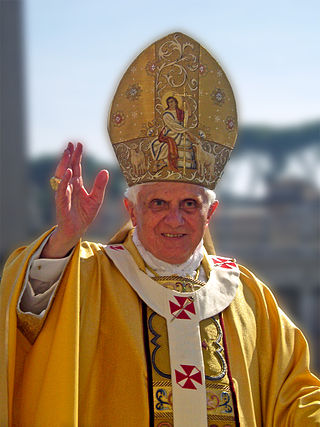
Dominus Iesus is a declaration by the Congregation for the Doctrine of the Faith, approved in a plenary meeting of the Congregation and signed by its then prefect, Joseph Cardinal Ratzinger, and its then-secretary, Archbishop Tarcisio Bertone. The declaration was approved by Pope John Paul II and was published on August 6, 2000.

Nostra aetate, or the Declaration on the Relation of the Church with Non-Christian Religions, is an official declaration of the Vatican II, an ecumenical council of the Catholic Church. It was promulgated on 28 October 1965 by Pope Paul VI. Its name comes from its incipit, the first few words of its opening sentence, as is tradition. It passed the Council by a vote of 2,221 to 88 of the assembled bishops.

Christianity and Islam are the two largest religions in the world, with approximately 2.8 billion and 1.9 billion adherents, respectively. Both religions are Abrahamic and monotheistic, having originated in the Middle East.

Interfaith dialogue refers to cooperative, constructive, and positive interaction between people of different religious traditions and/or spiritual or humanistic beliefs, at both the individual and institutional levels.
The Dicastery for Interreligious Dialogue, previously named Pontifical Council for Interreligious Dialogue (PCID), is a dicastery of the Roman Curia, erected by Pope Paul VI on 19 May 1964 as the Secretariat for Non-Christians, and renamed by Pope John Paul II on 28 June 1988.
The Catholic Church and Judaism have a long and complex history of cooperation and conflict, and have had a strained relationship throughout history, with periods of persecution, violence and discrimination directed towards Jews by Christians, particularly during the Middle Ages.

Sergio Pignedoli was a prominent Italian Cardinal of the Roman Catholic Church and a top candidate for pope. He served as auxiliary bishop to Pope Paul VI when he was archbishop of Milan, and as President of the Secretariat for Non-Christians from 1973 to 1980. He was elevated to the cardinalate in 1973.
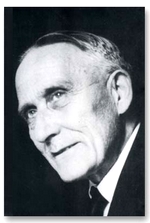
Louis Massignon was a French Catholic scholar of Islam and a pioneer of Catholic-Muslim mutual understanding. He was an influential figure in the twentieth century with regard to the Catholic Church's relationship with Islam and played a role in Islam being accepted as an Abrahamic Faith among Catholics.
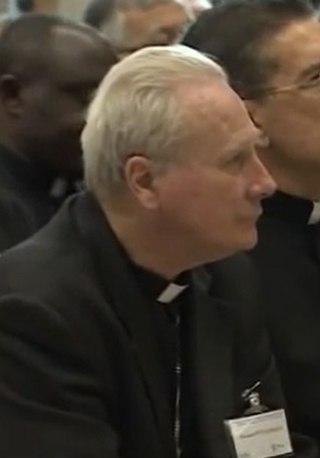
Michael Louis Fitzgerald is a British cardinal of the Roman Catholic Church and an expert on Christian–Muslim relations. He has had the rank of archbishop since 2002. At his retirement in 2012, he was the apostolic nuncio to Egypt and delegate to the Arab League. He headed the Pontifical Council for Interreligious Dialogue from 2002 to 2006. Pope Francis raised him to the rank of cardinal on 5 October 2019.

Rose Thering was a Roman Catholic Dominican religious sister, who gained note as an activist against antisemitism, educator and a professor of Catholic-Jewish dialogue at Seton Hall University in New Jersey. She played a crucial role in the implementation of the landmark Vatican II document Nostra Aetate, which repudiated anti-Semitism and laid the groundwork for improved relations between Catholics and Jews. A strong advocate for interfaith dialogue and understanding, she participated in numerous conferences, lectures, and seminars aimed at promoting mutual respect and cooperation between people of different faiths. In recognition of her interfaith work, Seton Hall established the Rose Thering Endowment for Jewish-Christian Studies, which provides scholarships for teachers to take courses in this department.

Augustin Bea was a German Jesuit priest, cardinal, and scholar at the Pontifical Gregorian University, specialising in biblical studies and biblical archaeology. He also served as the personal confessor of Pope Pius XII.
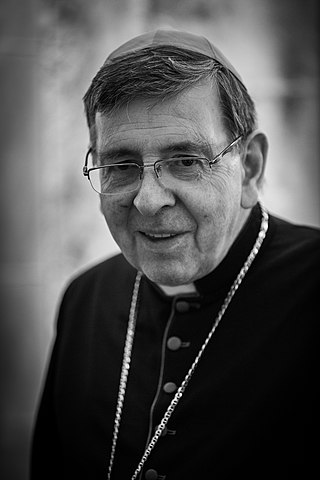
Kurt Koch is a Swiss prelate of the Catholic Church. He has been a cardinal since November 2010 and president of the Dicastery for Promoting Christian Unity since 1 July 2010. He was the bishop of Basel from 1996 until 2010.
The Commission for Religious Relations with the Jews is a pontifical commission in the Roman Curia tasked with maintaining positive theological ties with Jews and Judaism. Established on 22 October 1974, it works alongside the Pontifical Council for Promoting Christian Unity.
The Dicastery for Promoting Christian Unity, previously named the Pontifical Council for Promoting Christian Unity (PCPCU), is a dicastery within the Holy See whose origins are associated with the Second Vatican Council which met intermittently from 1962 to 1965.
The relations between Pope John XXIII and Judaism are generally thought to have been among the best in the bi-millennial history of Christianity. The Pope initiated a policy of Christian–Jewish reconciliation after his election to the papacy in 1959, which focused on the Second Vatican Council producing a document on the relationship between the Catholic Church and the Jews. During his earlier career in the diplomatic service, especially during World War II, he had taken a series of actions that demonstrated his solidarity with victims of anti-Semitism.
The Committee on Ecumenical and Interreligious Affairs is the principal ecumenical and interfaith organization of the United States Conference of Catholic Bishops.
The John Paul II Center for Interreligious Dialogue is an academic center that serves to build bridges between religious traditions, particularly between Catholic Christian and Jewish pastoral and academic leaders. The Center is a partnership between the Russell Berrie Foundation and the Pontifical University of Saint Thomas Aquinas (Angelicum). It operates as part of the Section for Ecumenism and Dialogue in the Theology Faculty of the Angelicum in Rome.
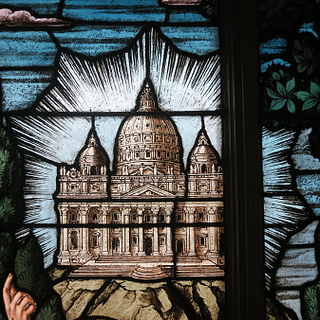
Catholic ecclesiology is the theological study of the Catholic Church, its nature, organization and its "distinctive place in the economy of salvation through Christ". Such study shows a progressive development over time being further described in revelation or in philosophy. Here the focus is on the time leading into and since the Second Vatican Council (1962–1965).

The Monastery of Toumliline was a Benedictine monastery in Toumliline, Morocco. It was the only Benedictine monastery in Morocco and hosted the International Meetings, an annual interfaith conference.
DIMMID, Dialogue Interreligieux Monastique - Monastic Interreligious Dialogue (DIM·MID), is a movement within the Benedictine and Cistercian order aimed to promote interfaith dialogue between monastic communities of different religions. Created in 1977, the movement approaches this aim through a mutual understanding and experience of each other's spirituality.












